What does a delphinium look like?
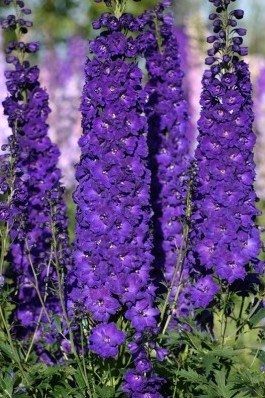 |
 |
In parks and garden plots, not only perennial hybrid delphiniums are grown, but also annual species, which are also very decorative. Delphiniums attract the attention of gardeners not only with their striking appearance and huge size, but also with their ease of care.
They are unpretentious, grow quickly, do not need winter shelters, but like all plants they have some peculiarities in growing and caring for them.Flowering begins in late June and, depending on the weather, lasts 20 - 30 days.
How to grow delphinium from seeds
There are two ways to grow delphinium from seeds.
- Growing through seedlings.
- Sowing seeds in open ground.
Growing through seedlings.
If you want a flower to bloom this same summer, then you will have to grow it through seedlings.
In what soil should I sow the seeds? Delphinium does not like acidic soil, so peat tablets are not suitable for sowing seeds. If you take peat (neutral reaction) for sowing, then only as one of the components of the soil mixture. For example, mix turf (or garden) soil, peat and sand, but it is better to replace peat with leaf soil (2:1:1).
Which seeds are best? Many gardeners complain that purchased seeds germinate very poorly, and sometimes do not germinate at all. Delphinium is an easy plant to grow and care for, but its seeds are quite capricious and require special storage conditions.
Seeds should be stored in the refrigerator in an airtight container. In warm, indoor conditions, they lose their germination capacity after 10-11 months, and if the seeds have been lying on a store shelf for 2-3 years, then there is nothing to expect from them.
Seed stratification. Before planting, the seeds must be kept in the refrigerator for 10 - 12 days, always in a humid environment and with access to air. This can be done in different ways. You can simply wrap it in a damp cloth and put it in a plastic container, you can make shallow longitudinal cuts in a foam sponge, push in the seeds and also place it in a container.
If there is a lot of space in the refrigerator, you can put a container with soil in which the seeds have already been sown.Of course, it is not necessary to use a refrigerator; if you have rooms with similar conditions (basement, loggia), carry out stratification there.
When to plant? Delphinium seedlings should be planted in March or early April.
Sowing.
The peculiarities of sowing include the fact that delphinium seeds are not sown individually. Although they are not very small, they germinate better when sown quite densely. As they grow, they seem to help each other. The seeds are laid out on a slightly compacted soil surface and covered with a thin layer of sand (3-5 mm) on top. Before sowing, they can be soaked for 6 hours in a zircon solution: 3 drops per 100 ml of water at room temperature.
Temperature regime. Delphinium seeds do not require high temperatures to germinate. Sometimes they begin to germinate already in the refrigerator during stratification. The optimal temperature for germination is 12 - 15 degrees. Further cultivation of seedlings is carried out at a temperature not exceeding +20. This of course creates some difficulties when growing seedlings indoors.
Caring for seedlings. The seedlings that appear after 10-15 days are moved as close to the light as possible. Good lighting is a prerequisite for growing strong seedlings. When the first true leaves form, the seedlings dive into separate cups. To do this, it is better to use large glasses or peat pots with a diameter of at least 9 cm.
How to water seedlings. Do not over-moisten the soil, do not water from above. Watering should be either through a tray or in a thin stream, trying not to get on the plants. Before watering, the soil must dry out, otherwise the seedlings may be damaged by blackleg.
At the end of April, seedlings that have been hardened in the fresh air are transplanted into the garden.Plants sown in March, if everything suits them, will bloom closer to autumn.
Planting and caring for delphinium in open ground
And the delphinium will thrive in a well-lit place, protected from the winds, and fertile soil. Even the best soil needs to be improved before planting, given that delphinium will have to be grown in one place for several years. Add good humus or compost (0.5 buckets), complete mineral fertilizer (1-2 tablespoons per plant), mix everything well. You can add a little wood ash.
Delphinium seedlings are not yet large at the time of planting in open ground, but the distance between them is large (up to a meter), taking into account their future dimensions. After planting, the soil surface is mulched with compost or humus.
For grown plants it is necessary build a support, otherwise tall stems may break - by the wind or under the weight of flowers.
In the first year of cultivation, delphinium does not need to be fed. Sometimes you need to carefully loosen the soil that has become compacted after watering or additionally mulch it. Closer to autumn, well-grown bushes can be fed with potassium sulfate and superphosphate so that they overwinter better.
After flowering, the flower stalks are cut off, and after the first frost, all shoots are cut off. But the shoots of delphiniums are hollow; after cutting, water can stagnate in the stumps and cause rotting of the root collar. To prevent this from happening, the stumps are split to the ground. Thin shoots killed by frost can simply be bent to the ground and cut out in the spring.
The plant does not require shelter for the winter, but it will not be superfluous to mulch the root zone with compost and fallen leaves.
Caring for delphinium in the second year
Next spring, when shoots appear from the center of the bush, the flower is fed with mullein infusion or complex mineral fertilizer (it should not contain a lot of nitrogen). Watering also begins in the spring, since the delphinium's lower leaves begin to dry out when there is a lack of moisture, and the plants bloom less well. In hot weather, water thoroughly every week.
A prerequisite for successful cultivation of delphiniums is pruning and thinning. In the spring, shoots are rationed, leaving 2-3 stems in young bushes, 3-5 in older bushes, but not more than seven. Thinning promotes abundant flowering and inhibits the development of fungal diseases (primarily powdery mildew), since normalized bushes are better ventilated. Broken shoots, if their centers have not yet become hollow, can be tried to be rooted.
During the period of flower stalk formation, it is advisable to feed the plants with organic infusion and complex mineral fertilizer. Healthy bushes are grown in one place for 5 - 6 years or even more.
After flowering, cutting off the flower stalks, the delphinium is fed again. And then it blooms again: more modestly than in spring, but still bright and impressive.
Growing delphinium annual
Growing an annual delphinium is not much different from growing its perennial relative. As a rule, annual plants are grown not through seedlings, but by sowing seeds in the ground. This is explained by the fact that the seeds of annual delphiniums greatly lose their viability by spring, and they are extremely painful to transplant.
When to plant annual delphinium.
The seeds are planted directly into the ground. This can be done in both spring and autumn; it must be said that autumn sowing is preferable.When sowing in autumn, seedlings appear very early, immediately after the snow melts, and accordingly, flowering occurs earlier. The seeds are immediately sown in a permanent place, maintaining a distance of 20 - 30 cm. Annual delphiniums also reproduce well by self-sowing.
Delphinium is grown in well-lit places, on loamy soils. Flowers are watered moderately and throughout the season, once every 2 - 3 weeks, they are fed with complex min. fertilizer. When growing tall varieties, you need to take care of the supports.
Delphinium propagation
In addition to seed propagation, there are two more ways of vegetative propagation of this plant.
Propagation by cuttings
By cuttings It's best to do it in the spring. Young shoots growing from the root (10-15 cm high) are cut off in such a way as to capture part of the root. They are planted, buried 2 cm in wet sand, and covered with non-woven material on top on arches. If you remember to water and spray them several times a day, they will take root in three weeks.
Delphinium cuttings are usually combined with spring thinning of the bush. Some of the shoots still need to be removed so that they do not go to waste; use them to grow young bushes.
Reproduction by dividing the bush
Adult bushes of delphiniums (4-5 years old) can be divided. In April, the rhizome is dug up, cut along the stems into sections (each should have renewal buds and roots) and planted. But at the beginning of shoot growth, the transplanted plants are shaded from direct sunlight and watered, preventing the soil from drying out. Then they are grown as usual. Delphiniums also divide in early autumn. But less often than in spring.
It is generally accepted that dividing the rhizome rejuvenates the plant, but recent research has shown that this is not the case.
Diseases and pests
Diseases
Powdery mildew. It appears especially often in damp, cold weather, mainly in the second half of summer. A white coating appears on the delphinium leaves, which subsequently turns brown and dies.
Prevention: grow bushes not close to each other, thin out the shoots every spring so that the plants are well ventilated, spray with a 0.5% solution of Bordeaux mixture.
When a disease appears, spray with “Topaz” or a solution of foundationazole.
Black bacterial spot. Black spots appear on the lower leaves, gradually they rise up, the stems begin to dry out and the plant dies. At the first signs of the disease, collect all infected leaves and burn them. The bushes are treated twice with a tetracycline solution, one tablet per liter of water.
Pests
DElphinium fly. The most dangerous pest, it lays its eggs in flower buds. Damaged flowers quickly fall off and do not produce seeds. These insects overwinter on the roots of plants.
Control measures: during the budding period, the bushes should be sprayed with prometrin (10% wettable powder) - 25 g per bucket of water.
Slugs. Huge damage is caused to delphiniums slugs, they are able to eat the leaves of a young plant in one night.
Control measures: “Slug eater” granules are laid out between the bushes or all kinds of traps for slugs are arranged.
Photo of delphinium in the garden
Author of the article: T.N. Serova
Continuation of the topic:
- How to grow aquilegia from seeds
- Be sure to plant astilbe in the garden
- How to grow aubrieta and care for it in the garden
- Planting and caring for gaillardia
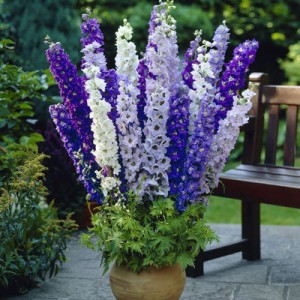
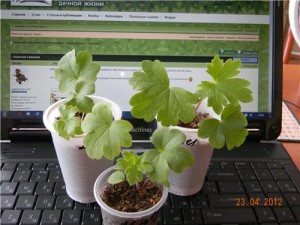
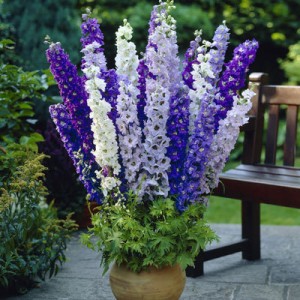
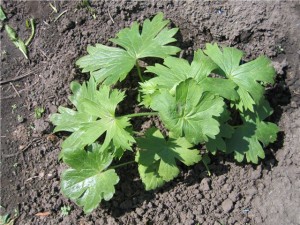
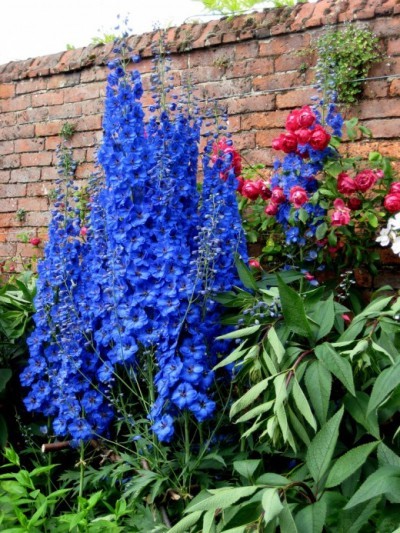
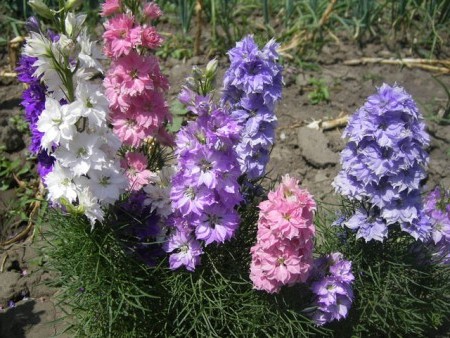
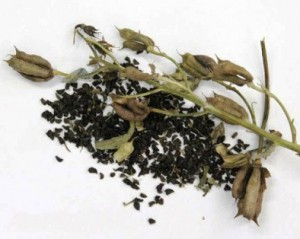
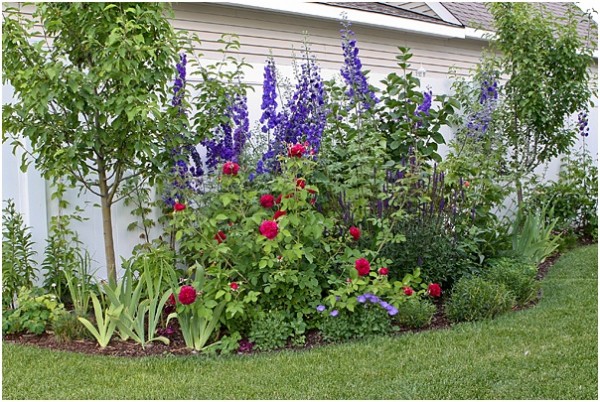
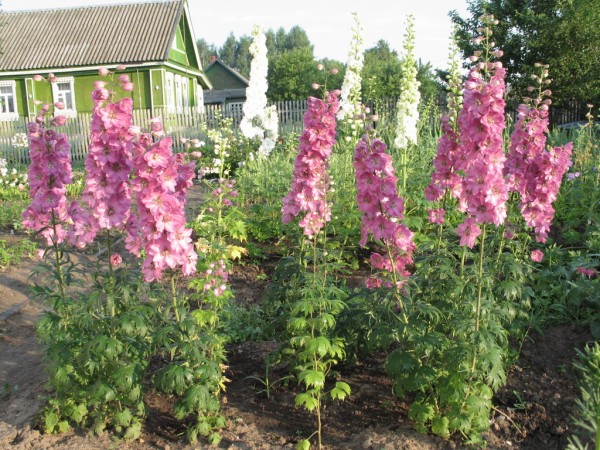
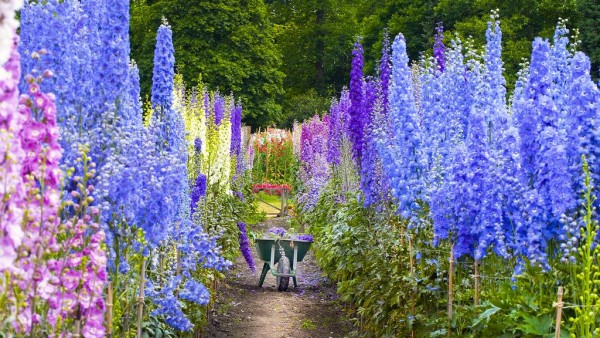
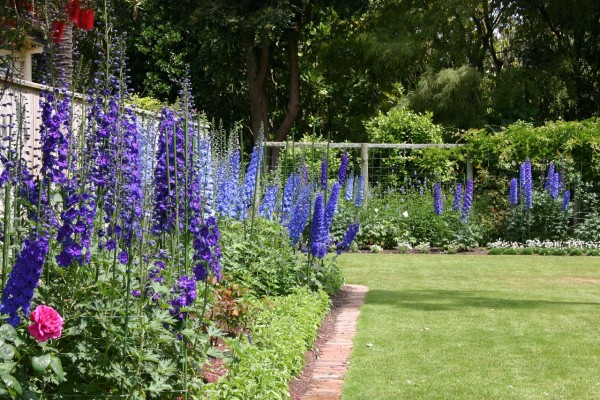

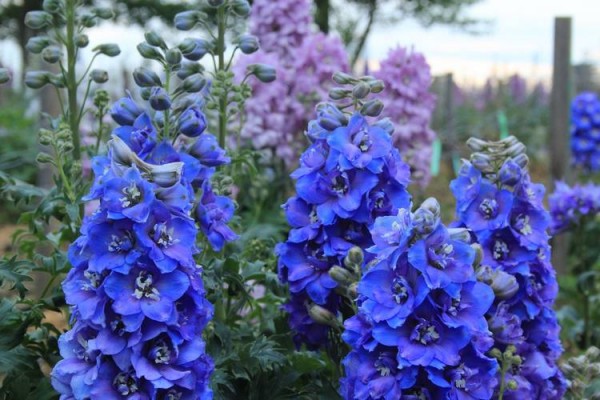
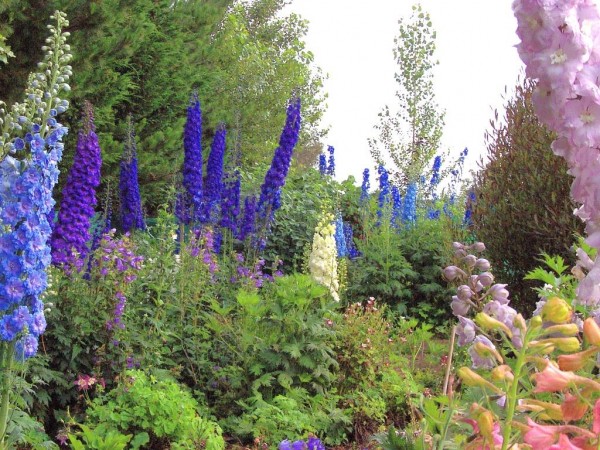
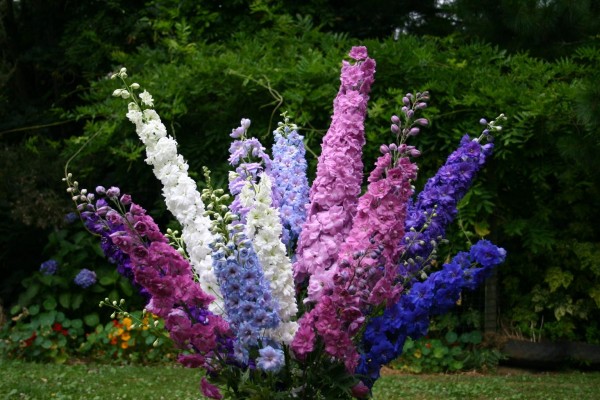
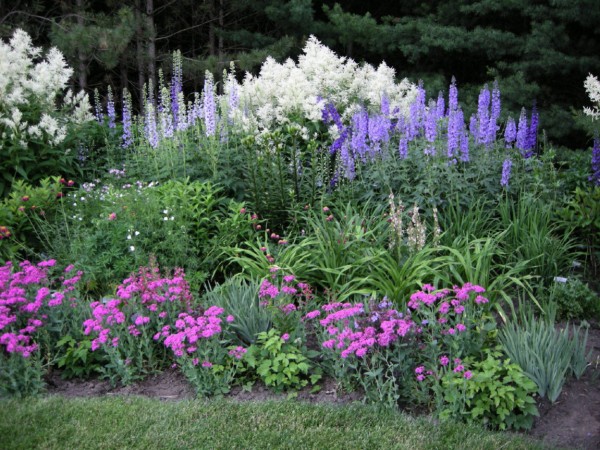
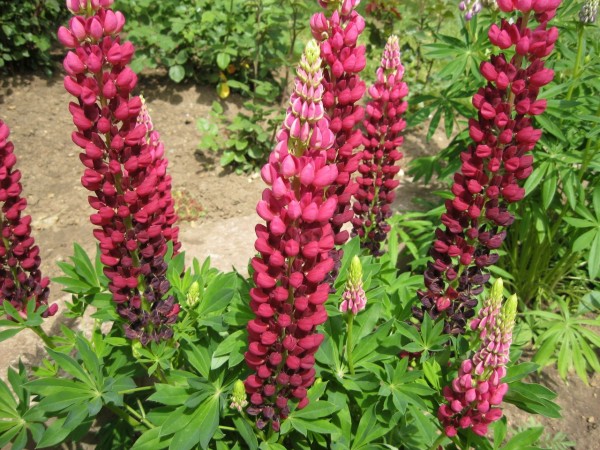
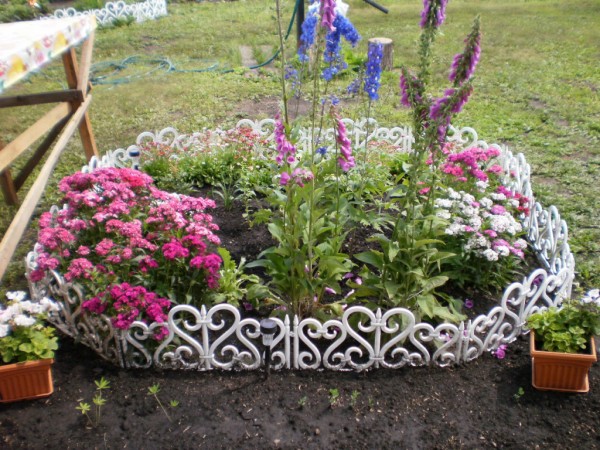
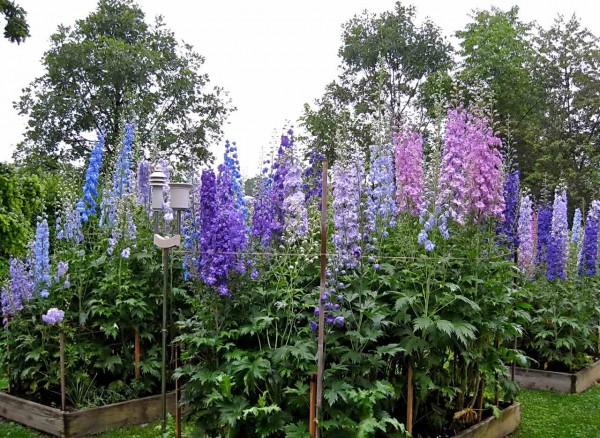
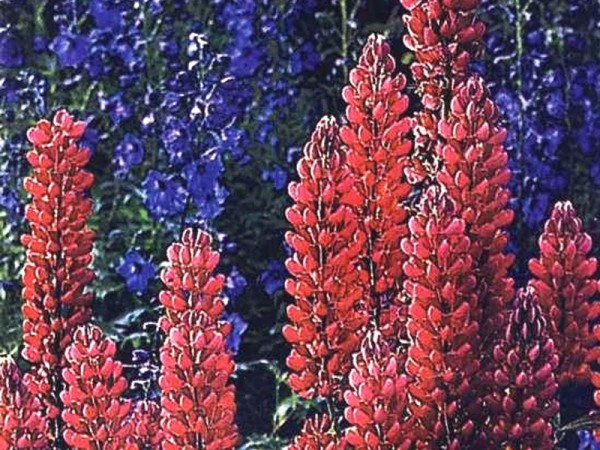
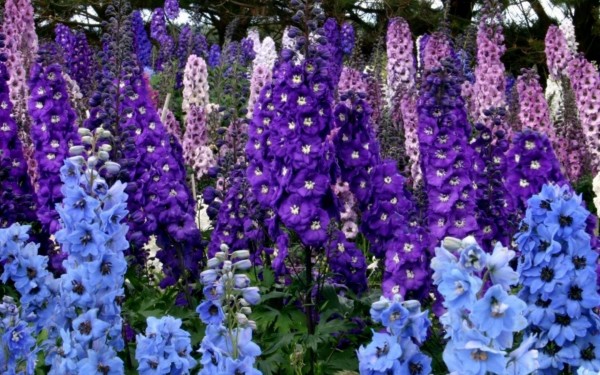
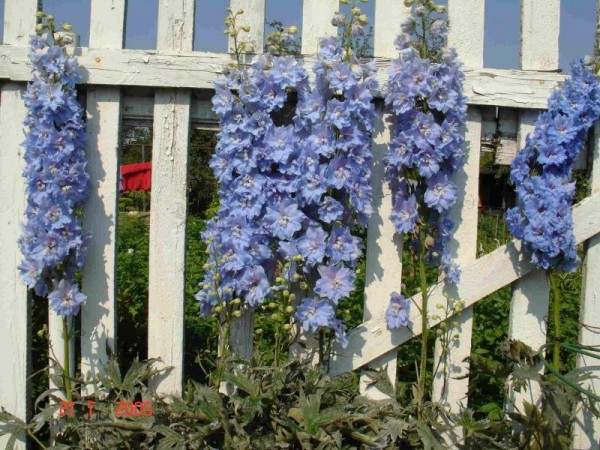

 (1 ratings, average: 4,00 out of 5)
(1 ratings, average: 4,00 out of 5) CUCUMBERS NEVER GET SICK, I'VE BEEN USING ONLY THIS FOR 40 YEARS! I SHARE A SECRET WITH YOU, CUCUMBERS ARE LIKE THE PICTURE!
CUCUMBERS NEVER GET SICK, I'VE BEEN USING ONLY THIS FOR 40 YEARS! I SHARE A SECRET WITH YOU, CUCUMBERS ARE LIKE THE PICTURE! You can dig a bucket of potatoes from each bush. Do you think these are fairy tales? Watch the video
You can dig a bucket of potatoes from each bush. Do you think these are fairy tales? Watch the video
 How our fellow gardeners work in Korea. There is a lot to learn and just fun to watch.
How our fellow gardeners work in Korea. There is a lot to learn and just fun to watch. Eye trainer. The author claims that with daily viewing, vision is restored. They don't charge money for views.
Eye trainer. The author claims that with daily viewing, vision is restored. They don't charge money for views. A 3-ingredient cake recipe in 30 minutes is better than Napoleon. Simple and very tasty.
A 3-ingredient cake recipe in 30 minutes is better than Napoleon. Simple and very tasty. Therapeutic exercises for cervical osteochondrosis. A complete set of exercises.
Therapeutic exercises for cervical osteochondrosis. A complete set of exercises. Which indoor plants match your zodiac sign?
Which indoor plants match your zodiac sign? What about them? Excursion to German dachas.
What about them? Excursion to German dachas.
The interesting flower leaves are reminiscent of wild black currant leaves.I was immediately even a little taken aback by this coincidence. Well, the beauty is certainly indescribable. So many shapes and shades. I will definitely plant delphinium in my summer cottage.